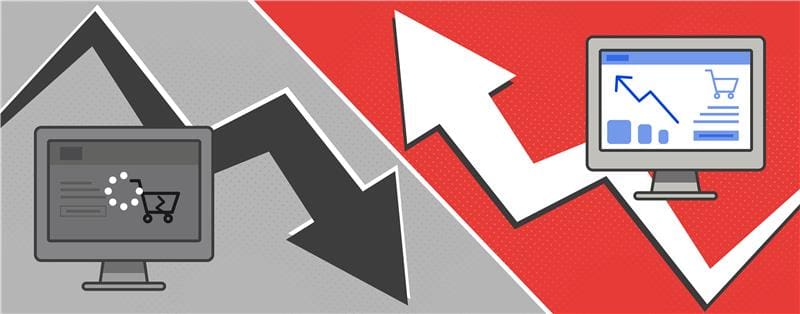
The Risk of Operating with Outdated B2B Ecommerce Systems
Laura
Buzin

You’ve invested in an ecommerce platform, and for years, it’s dutifully processed orders in the background. But beneath the surface, a silent assassin may be eroding your competitive edge and threatening your very foundation: an outdated B2B ecommerce system.
This isn’t just about fresh interfaces or cosmetic updates. It’s about the core functionality and strategic agility your business depends on. In fact, a 2025 commercetools study found that 64% of financial decision-makers identify legacy systems as the single biggest barrier to digital success.
At the same time, it’s impossible to ignore the buzz around generative AI and the speed of innovation it brings. New tools launch every week, and the pressure to keep up can feel overwhelming. But there’s an important distinction to make: Experimenting with emerging AI capabilities is optional, while continuing to run a revenue-generating business on outdated infrastructure is a risk you can’t afford to ignore.
AI adoption can wait until clear, proven use cases emerge. Legacy technology, on the other hand, creates immediate vulnerabilities — from operational inefficiency to security risks that could compromise customer data, damage your reputation, and hurt your bottom line.
That’s why the real urgency lies in addressing outdated B2B ecommerce systems. Let’s dig into the risks they present and what it takes to modernize your foundation for long-term growth.
- Risks Posed by Outdated Software in B2B Ecommerce
- Signs Your B2B Ecommerce Platform Is Outdated
- What to Look for in a B2B Ecommerce Platform as a Growing Brand
- Don’t Risk It With Outdated B2B Ecommerce Systems
Risks Posed by Outdated Software in B2B Ecommerce
An outdated system is more than an operational inconvenience — it’s a silent saboteur. Beneath the surface, it undermines performance, frustrates teams, alienates customers, and quietly drains revenue. Instead of simply holding your business back, it actively pulls it down.
The aforementioned 2025 commercetools report also shows that this risk isn’t theoretical. More than half of surveyed B2B companies and manufacturers report their core commerce technology will reach end-of-life within two years, and nearly one in five expect that reality within the next 12 months. In other words, the clock is ticking.
When a platform ages out, the consequences ripple through every layer of the business, with security becoming the first casualty. DeepStrike’s research suggests that 90% of organizations still lack the maturity to defend against evolving threats. Outdated systems are often a contributing factor because unsupported software often lacks critical patches, leaving businesses vulnerable in an era when AI-driven attacks are accelerating.
Performance issues follow close behind, as slow load times, integration errors, and costly maintenance pile up. Not to mention, the human impact is just as damaging. Poor usability and outdated interfaces drive customers away while eroding employee morale. Teams lose confidence in the tools meant to support them, and loyal buyers begin to question whether your brand is keeping pace.
Meanwhile, modern competitors are capitalizing on advanced analytics, omnichannel capabilities, and AI-powered personalization — advantages that legacy systems simply can’t match.
Ultimately, running on outdated software isn’t a neutral choice.
Signs Your B2B Ecommerce Platform is Outdated
You can think of an outdated platform as one that lacks the capabilities to meet the demands of modern and future B2B ecommerce needs.
Conduct an assessment of your current operating system — are there any red flags? Here’s what to look for:
Technological Debt
Whether it’s built on old codebases, programming languages, and architectural patterns that are no longer efficient, secure, or supported. Just like maintaining a classic car that’s no longer in active production, finding skilled developers capable of working on archaic systems can be challenging, expensive, and slow.
Downtime resulting from this technological debt can also have a direct impact on your bottom line if your website stops functioning.
Lack of Modern Features and Few (or Zero) Integration Options
Perhaps it lacks essential functionalities that today’s B2B buyers expect, such as personalized catalogs, self-service portals, sophisticated search, real-time inventory, and complex pricing rules.
Or maybe it’s a struggle to create a seamless connection with other vital business systems, such as ERPs, CRMs, marketing automation platforms, or supply chain management tools, resulting in data silos and inconsistent, manual processes that are prone to error.
Limited Options for Scalability
Although your current system may be able to handle current traffic patterns and customer needs, if it isn’t nimble enough to scale up or down according to the business’s evolving needs, it becomes a liability for the future.
Negative Customer Retention
A dated user experience doesn’t just slow down sales — it erodes trust and loyalty. Recent industry research shows that more than half of B2B sellers are unhappy with how their current storefronts perform when it comes to keeping customers engaged.
Nearly as many report that holding onto repeat buyers has become increasingly difficult.
When your ecommerce platform introduces friction instead of removing it, the consequences reach beyond conversions — they threaten long-term relationships with your most valuable customers.
What to Look for in a B2B Ecommerce Platform as a Growing Brand
You’ve audited your existing B2B ecommerce system and confirmed what you suspected: it’s outdated, increasingly risky, and holding the business back. The next step is determining how to move forward.
Do you upgrade, or do you replatform? While both paths are designed to modernize your B2B ecommerce foundation, they differ dramatically in scope, cost, and long-term impact.
Upgrading preserves much of your existing structure and integrations, whereas replatforming essentially means rebuilding from the ground up. Because of that, replatforming can be a costly and time-consuming endeavor — and it’s not the recommended route if upgrading to a newer version of your existing platform is still an option.
When possible, start with the low-hanging fruit. Upgrading allows you to strengthen core functionality and security without fully dismantling what’s already working. Replatforming, on the other hand, requires complete reconfiguration, reintegration, and extensive testing to ensure every component performs as expected once live.
That said, your decision ultimately depends on the level of platform support available. If your system has reached end-of-life and is no longer supported by the developer, replatforming may be unavoidable.
Whether you’re a growing brand selecting your first B2B ecommerce platform or an established enterprise facing the reality of replatforming, now is the time to think strategically. Focus on scalability, flexibility, and long-term alignment with your business goals. The platform you choose should not only solve today’s challenges but also position your brand to adapt — so you’re not revisiting this same decision again a few years down the line.
Here’s what to look for in a future-proof and scalable B2B ecommerce platform:
- A B2B ecommerce platform that’s well-supported by the developer to decrease cybersecurity threats.
- Enterprise-grade security features.
- Robust, B2B-specific features like complex pricing catalogs, account management features, multi-buyer support, and self-service capabilities.
- Scalability and performance, especially through cloud-native architecture.
- Strong integration capabilities with ERPs, CRMs, and other integral tools.
- User-friendliness for internal teams and customers.
Don't Risk It with Outdated B2B Ecommerce Systems
An outdated B2B ecommerce system is a ticking time bomb. It may already be the cause of reduced conversions and the inability to capitalize on increasingly more effective ways to reach and sell to your ideal customers. But rather than completely replatforming, consider your upgrade options as a low-hanging fruit.
No matter your choice, k-ecommerce is here to support you throughout your journey as the best B2B ecommerce platform that integrates with ERPs like Acumatica and Microsoft Dynamics. Schedule a demo with our team to see how we can work with your existing (or future!) systems.


